Staking on StakeWise V3 – a comprehensive guide

About StakeWise V3
StakeWise V3 is an innovative staking platform offering users a secure and flexible way to stake their ETH and GNO tokens. The V3 version introduces a layered staking approach where users can either stake their assets within their own Vaults, deposit and stake their assets through selected node operators’ Vaults or use one-click staking to swap their assets for a liquid staking token with built-in slashing protection. Through this flexible approach, the platform can serve users of all sizes — from individual stakers seeking simple and secure staking options to large-scale investors needing customized staking solutions that integrate with other DeFi applications.
This latest iteration of the StakeWise protocol not only maintains flexibility and security but also fosters a more inclusive and decentralized staking marketplace. By facilitating individual choice in node selection and staking strategies, StakeWise V3 helps reduce the effect of network concentration and other negative effects of having stake concentrated among a small amount of node operators.
In terms of security, the StakeWise V3 smart contract collection has undergone several audits by reputable firms, including Halborn and Sigma Prime, ensuring high security standards and code integrity. Additionally, these same contracts have earned the trust of prominent industry players, notably being selected by MetaMask for its pooled staking product.
Prerequisites
To start staking on StakeWise V3, you will need to have some ETH / GNO in your own personal, non-custodial wallet that supports the WalletConnect protocol. Compatible wallets include popular options such as MetaMask, as well as Safe multi-sig wallets, which are ideal for those seeking additional security through the use of multiple independent signing keys.
Any amount of ETH/GNO can be staked on StakeWise V3.
Should you use one-click staking or choose a Vault?
As mentioned in the introduction, StakeWise V3 represents a multi-layered staking platform. The easiest way to stake is by using one-click staking, where you swap your ETH for osETH (or GNO for osGNO), an ERC20 liquid staking token representing your staked position. The alternative is to deposit your assets into a Vault of your choice. Vaults are backed by smart contracts, ensuring that the node operator managing a Vault never has access to your deposited assets — only the smart contract does.
| One-click staking | Staking through a Vault | |
|---|---|---|
| Fee | ~10% | 5-15% depending on Vault |
| Slashing Protection | Built-in | Depends on Vault |
One-click staking is as simple as connecting your wallet on the StakeWise V3 landing page, selecting the amount you wish to stake and hitting the Stake button. The rest of this guide will focus on staking through a Vault.
Choosing a Vault
Choosing the right Vault for staking on StakeWise V3 requires careful consideration of several factors beyond just potential returns. Understanding that not all Vaults offer the same level of safety is crucial — each is managed by its own operator with distinct protocols for security and slashing protection. Here are some key aspects to consider when selecting a Vault:
Operations
Reputation
Performance
Operator size
Fees
Examine the operational details in each Vault's description. Look for practices that enhance the network's resilience, such as using minority clients and geographically distributing their servers. Assess how Vault operators manage slashing protection — some offer additional safeguards like third-party or proprietary slashing insurance, providing an extra layer of security.
At Serenita, we prioritize client diversity and exclusively use minority clients to safeguard against majority client bugs. We complement our slashing-prevention measures with a dedicated slashing insurance fund to cover any potential losses.
The reputation of a node operator can be a significant indicator of reliability. If you're unfamiliar with an operator, research their background by visiting their website and reviewing their social media presence to gauge their industry standing. Consider their contributions to the staking ecosystem, such as involvement in open-source projects or innovations in staking technology. You’ll also want to research whether the operator has experienced any security incidents in the past, or if its validators have ever been slashed.
At Serenita, we are strong supporters of open-source and have been supporting the staking community for years through the development, maintenance, and contributions to various open-source projects and public goods. Our track record is clean with no security breaches or validator slashings, reinforcing our reputation as a secure and dependable node operator.
Although node operators using minority clients may sometimes show slightly lower performance, their critical role in diversifying the client base significantly contributes to the overall resilience of the network. This diversity not only strengthens the network but also reduces risk for depositors. Counterintuitively, this setup can be advantageous during unstable network conditions. For instance, if a client encounters a bug, the penalties applied during the downtime needed for fixes are lower if the affected client represents a smaller portion of the network. This mechanism helps mitigate the impact on stakers when using minority clients, making them a safer choice in scenarios of client-specific issues.
Serenita consistently achieves industry-leading performance, proving that minority clients have come a long way and demonstrating our capability to balance security with efficiency.
You may be tempted to go with the largest Vault or select a node operator that already runs a big number of validators on other staking protocols. However, for the benefit of the network, it would be better to choose a smaller node operator instead. A lot of smaller independent node operators is much better for the decentralization of the network than a handful of large node operators. Going with a large node operator also does not automatically mean less risk - several large node operators have been exposing their clients to significant risk by running supermajority clients. In case of a bug in such a client, their clients could have lost a significant amount of their staked assets.
At Serenita we currently only run a very small amount of the network's validators, making us a good choice when it comes to choosing a Vault run by a professional node operator. This may change in the future, at which point we'd recommend going with a smaller node operator.
Finally, consider the fee structure of each Vault. While it’s tempting to opt for the lowest fees, excessively low fees might lead operators to cut costs in ways that could compromise service quality, such as opting for less reliable infrastructure providers which could result in more downtime. Another thing to keep in mind is the impact of pushing fees too low – only the largest staking service providers would be able to turn a profit and that would have a strong centralizing effect on the network.
Serenita’s public StakeWise V3 Vault charges a staking fee of 5% on ETH and 15% on GNO staking rewards.
How to stake through a Vault
Now that you've selected a Vault, it is time to deposit your assets into it.
Start by heading to the Vaults page and find the Vault of your choice.
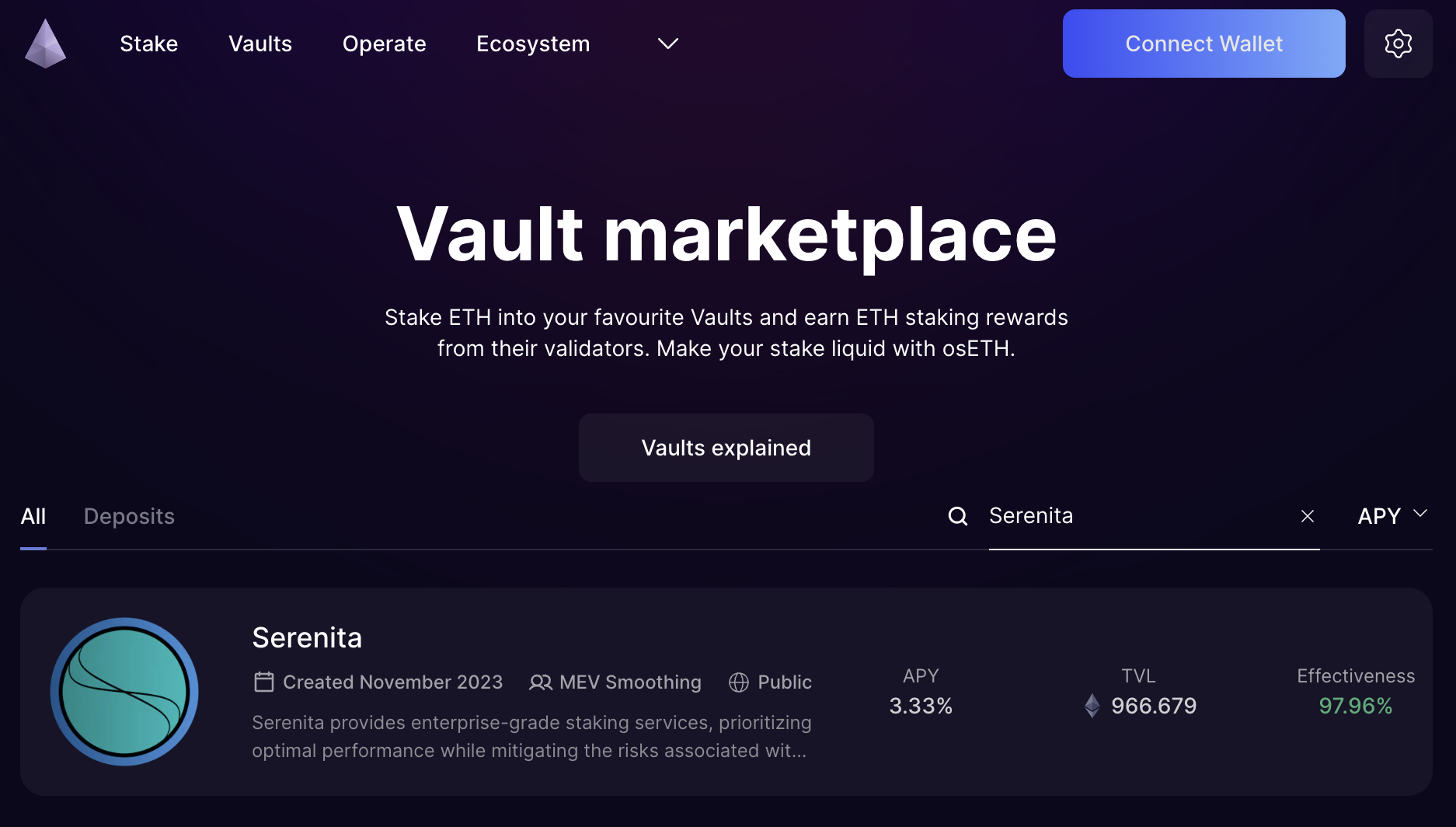
Click on the Vault of your choice. Once you are on the Vault’s page, click on Connect Wallet in the top right corner and connect your wallet.
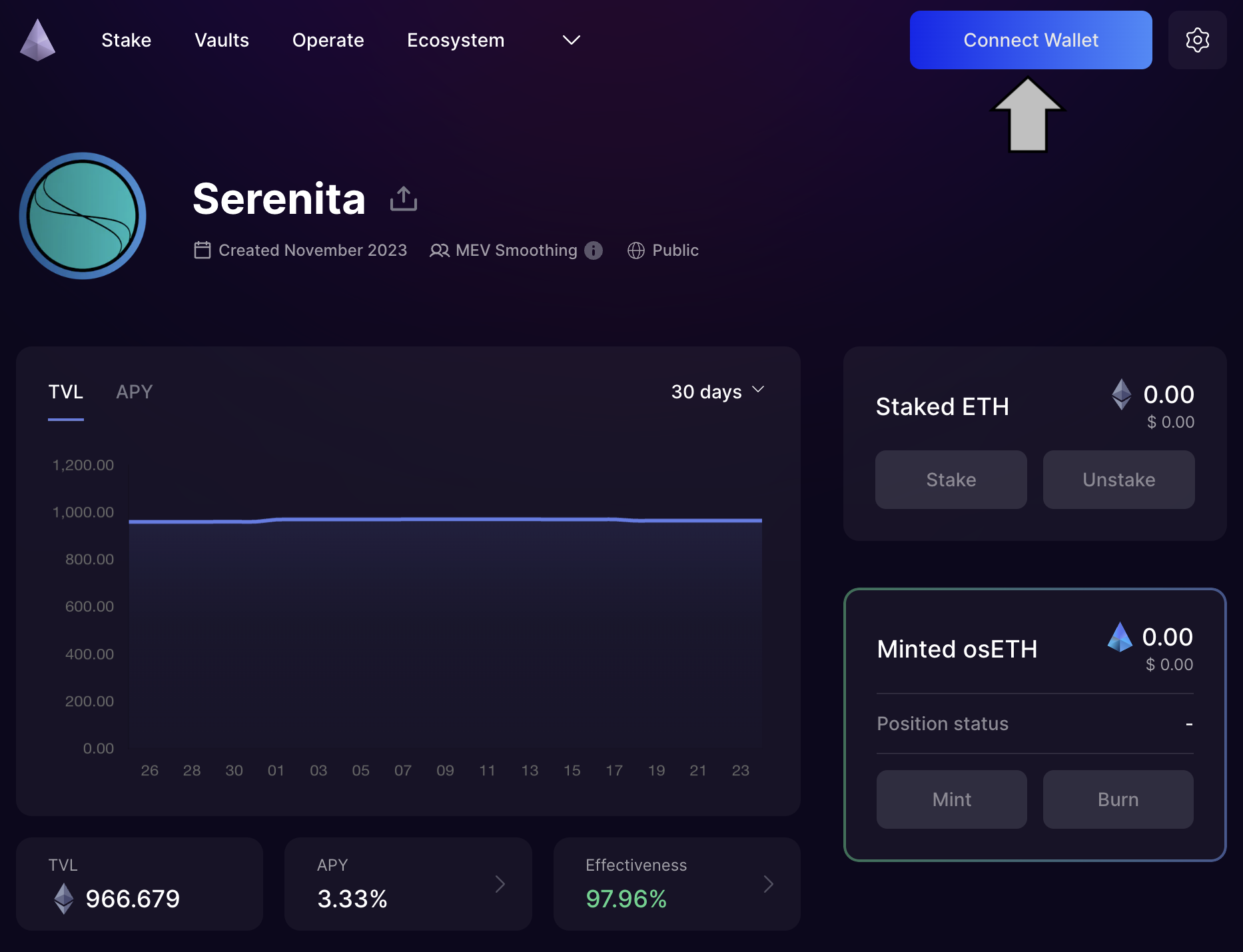
Once your wallet is successfully connected, you will now be able to click the Stake button:
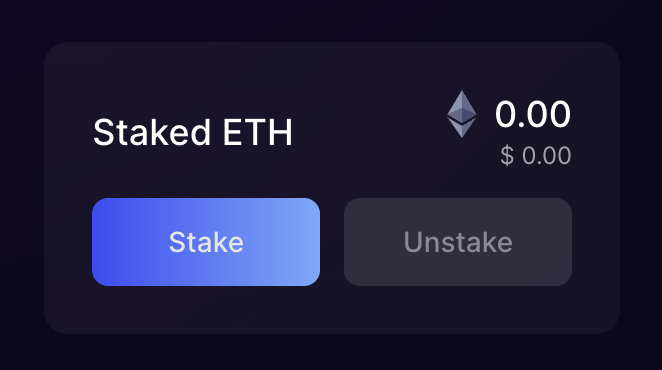
Clicking the Stake button will make a modal window appear that allows you to specify the amount you would like to stake. Click the Stake button and confirm the transaction in your wallet.
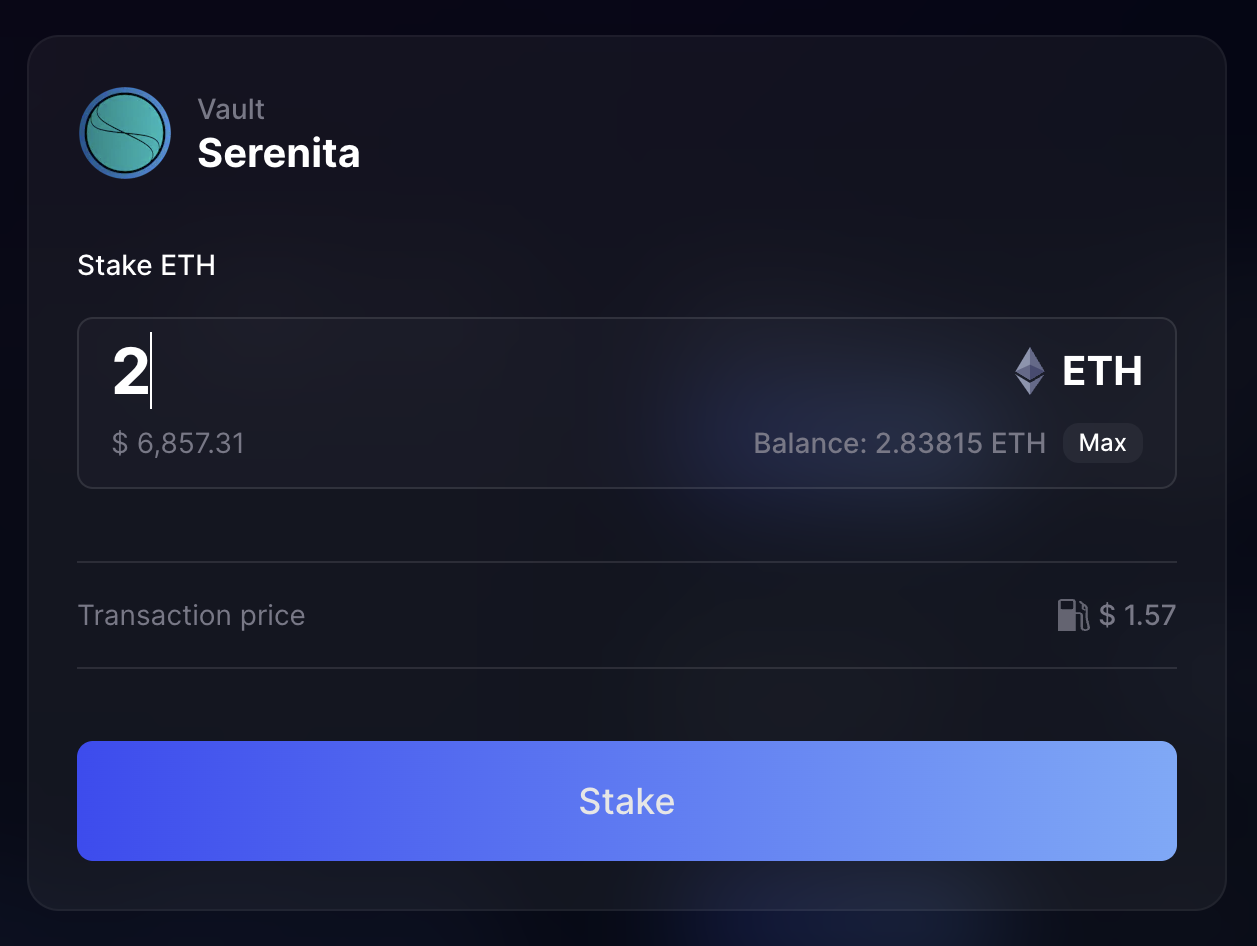
That’s it! Your assets will now be staked through the Vault and start earning rewards. The Vault page should now reflect your amount of staked ETH or GNO.
Tracking rewards
StakeWise V3 includes an easy way to track your staking rewards. Once you have assets staked in a Vault, you will see a chart showing your daily staking income. You can easily export the data using the Export button, resulting in a xlsx or csv file detailing the exact amounts of your rewards.
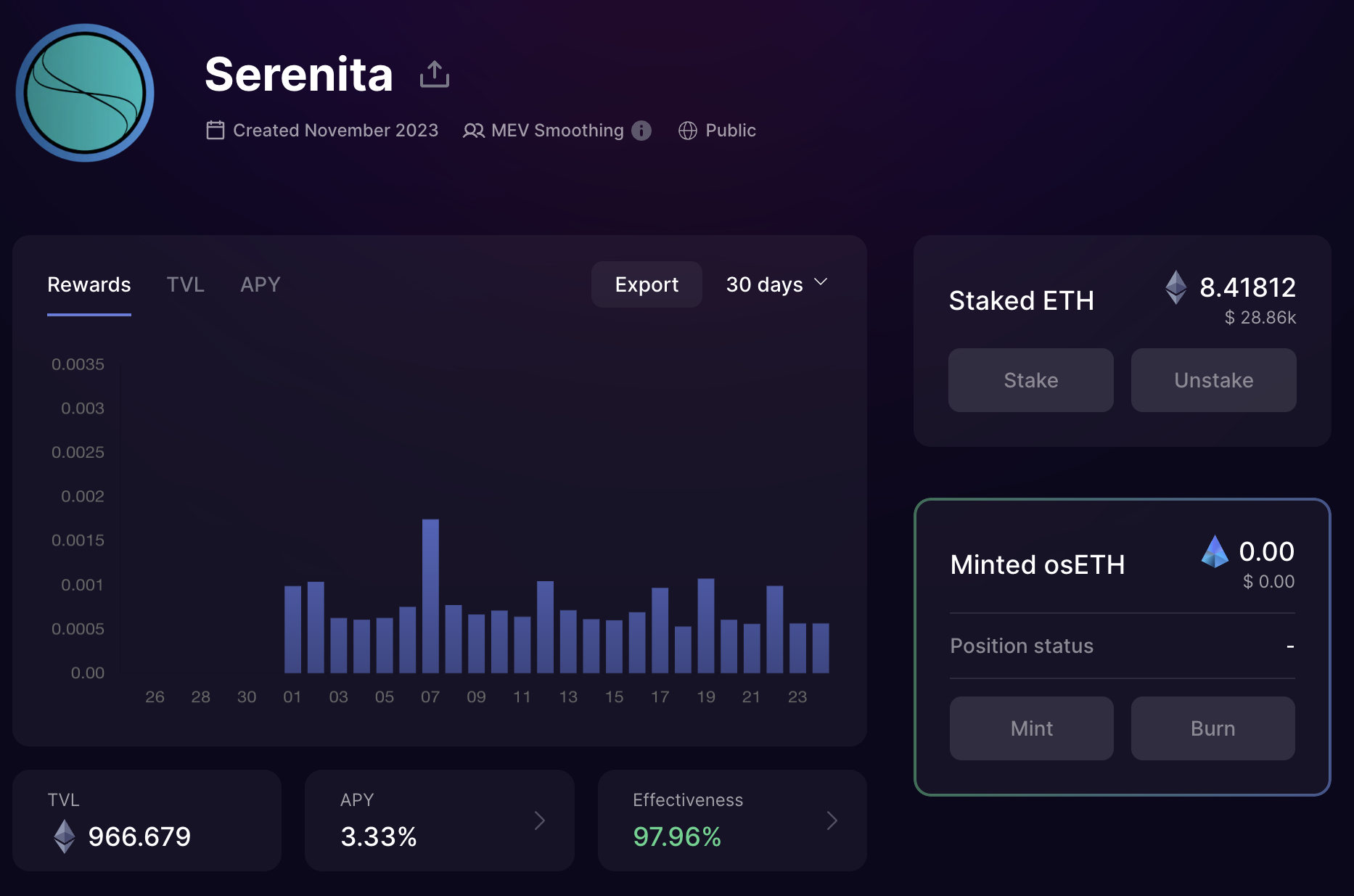
Minting osETH / osGNO
When you deposit assets into a Vault, that stake is not automatically made liquid and cannot be used in DeFi protocols. Making your stake liquid is optional in StakeWise V3 and is handled through a minting mechanism. You may mint up to 90% of your assets' worth in osETH / osGNO tokens which you can then use in DeFi. For more details about the minting process and the resulting liquid staking token, please refer to StakeWise's official documentation.
Unstaking
Unstaking is just as easy as staking but there are some things to be aware of.
Click the Unstake button to start the process. A modal window will appear allowing you to choose the amount you'd like to unstake.
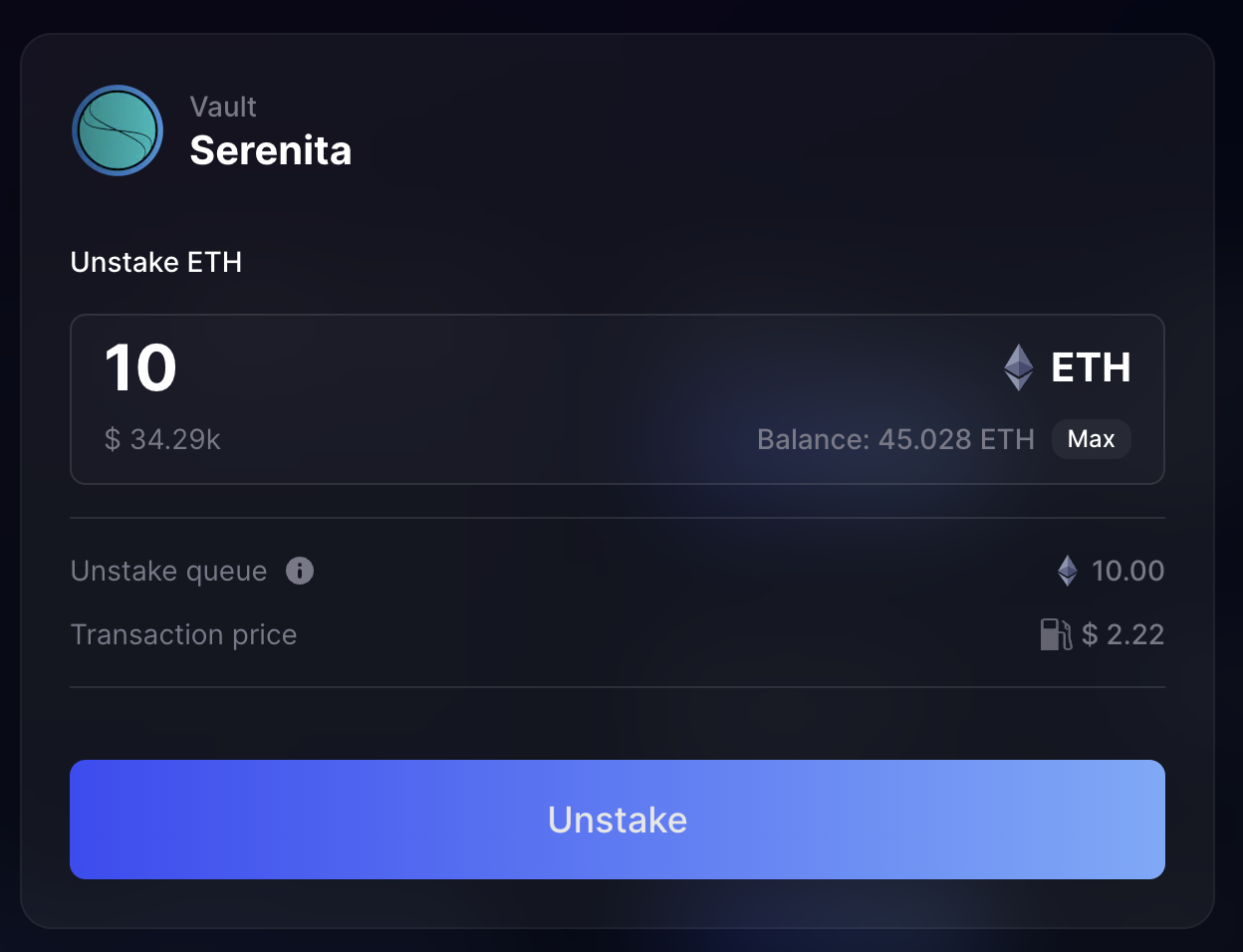
Once you click Unstake and confirm the transaction, the unstaking process will begin. This process will always take at least 24 hours, but the exact time can vary based on the Vault conditions at the time of your request.
If there are enough "in excess" Vault assets to cover your request to unstake, you will be able to claim your unstaked assets 24 hours after you initiate the process.
If there are not enough "in excess" Vault assets, validators will need to be exited on the beacon chain. This will happen automatically but there is a so-called exit queue involved. It limits the number of validators that can enter and exit the beacon chain. The StakeWise app will show you an estimate of how long this process will take.
Once there are enough assets in the Vault for your unstaking request to be fulfilled, you will see the option to "Claim" them, transferring your deposit and any earned rewards back to your wallet.
Stake Now
As a proud launch partner of StakeWise V3, Serenita has quickly risen to become one of the top Vaults on the platform. We invite you to join the growing number of StakeWise users who are enjoying their staking rewards. Experience the benefits of staking with Serenita and start staking today. Discover how easy, secure, and profitable staking can be with the right partner!
About Serenita
Serenita is a leading blockchain infrastructure operator specializing in secure and reliable solutions for managing and growing digital assets, with a primary focus on Ethereum staking. Our seasoned team combines years of experience, technical expertise, and industry knowledge to ensure optimal performance and best-in-class digital asset security. Serenita is committed to contribute to the broader ecosystem by continuing to support home stakers, running minority clients and taking any future measures that benefit the network at large.
We guide our customers through the technical complexities of Ethereum staking, providing non-custodial solutions with the flexibility to stop staking at any time. Reach out to discover how Serenita can help you manage and grow your digital assets, providing expert-driven solutions tailored to your needs.